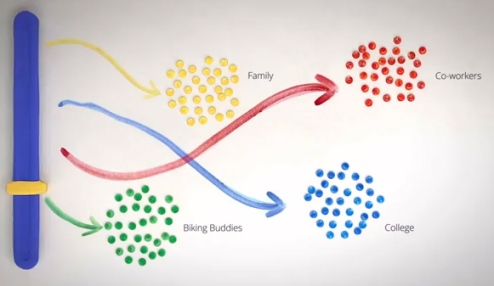Is Google+ the answer to keeping your personal and professional life separate online?
8 Jul, 11 | by BMJ
Google is taking yet another stab at social networking with Google+ after the past disappointments of Buzz and Wave. This time, however, they have launched a more polished product than usual and offer a solution to the problem of keeping one’s personal and work life separate. The interface and concepts are cleaner and simpler, which will make it easier for early adopters to engage, use and then share their experiences.
In its blog post to introduce Google+, Google’s Vic Gundotra said the following:
“Today, the connections between people increasingly happen online. Yet the subtlety and substance of real-world interactions are lost in the rigidness of our online tools. In this basic, human way, online sharing is awkward. Even broken. And we aim to fix it.”
Circles
According to Google, something has been fundamentally ‘broken’ about online social networking. “In the real world, people change how they behave” depending where they are or who they are talking to, says Gundotra. When online, they have been forced to present a single version of themselves to the world. That means not only losing control of who sees private information about them but also makes it impossible for people to maintain the different personas they adopt in different situations.
‘Circles’ is Google’s solution to this problem and is the key component of Google+. It allows users to keep personal and work life separate in a way that Facebook currently can’t (but expect Facebook to work on offering similar options soon). It means you can share updates with individual Circles and combinations of Circles. For example, if you posted a holiday picture, you could share it with your friends and not your colleagues. Or, if you wanted to send a link about a current work task with the relevant people, you could simply share it with your colleagues rather than your wider network of contacts.

You can also filter your Stream to see updates from individual circles only, as well as move people between Circles at will. There’s also a clever option to disable resharing on anything you post to ensure it doesn’t go beyond your chosen person or Circle. A great little touch which could be of particular use to researchers collaborating on a paper.
Other features
- Hangouts – “Start a hangout anytime, from anywhere. Up to ten people can stop in and chat.” It’s pretty self explanatory; a group chat function that allows you to chat in real time video. (Watch the video here)
- Sparks – “Use Sparks to get a constant feed of stuff you’re really into, and share it with friends.” It’s essentially a refined version of Google search that enables you to access things of interest on a particular topic. (Watch the video here)
- Streams – Streams is very much like your News Feed in Facebook. You can have it show everything coming through from all sources, or you can filter it to just show certain circles such as just Friends, or just Family. The “Incoming” stream shows posts that were shared with you by people who aren’t in your circles.
Google+ is atttempting to bring ‘everything’ together from as many sources as possible,whilst tailoring the output to your individual needs. However, traction will be contingent upon everyone convincing their contacts to regularly use it. Even for something with the scale of Google, this feat is still problematic, as we’ve seen with Wave and Buzz. There will need to be compelling reasons to share on Google+ instead of Facebook and/or Twitter.
Nevertheless, along with other social media initiatives like Twitter journal clubs and crowdsourcing, Google+ is creating new and exciting opportunities for researchers to collaborate online.